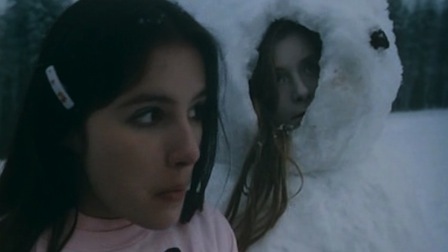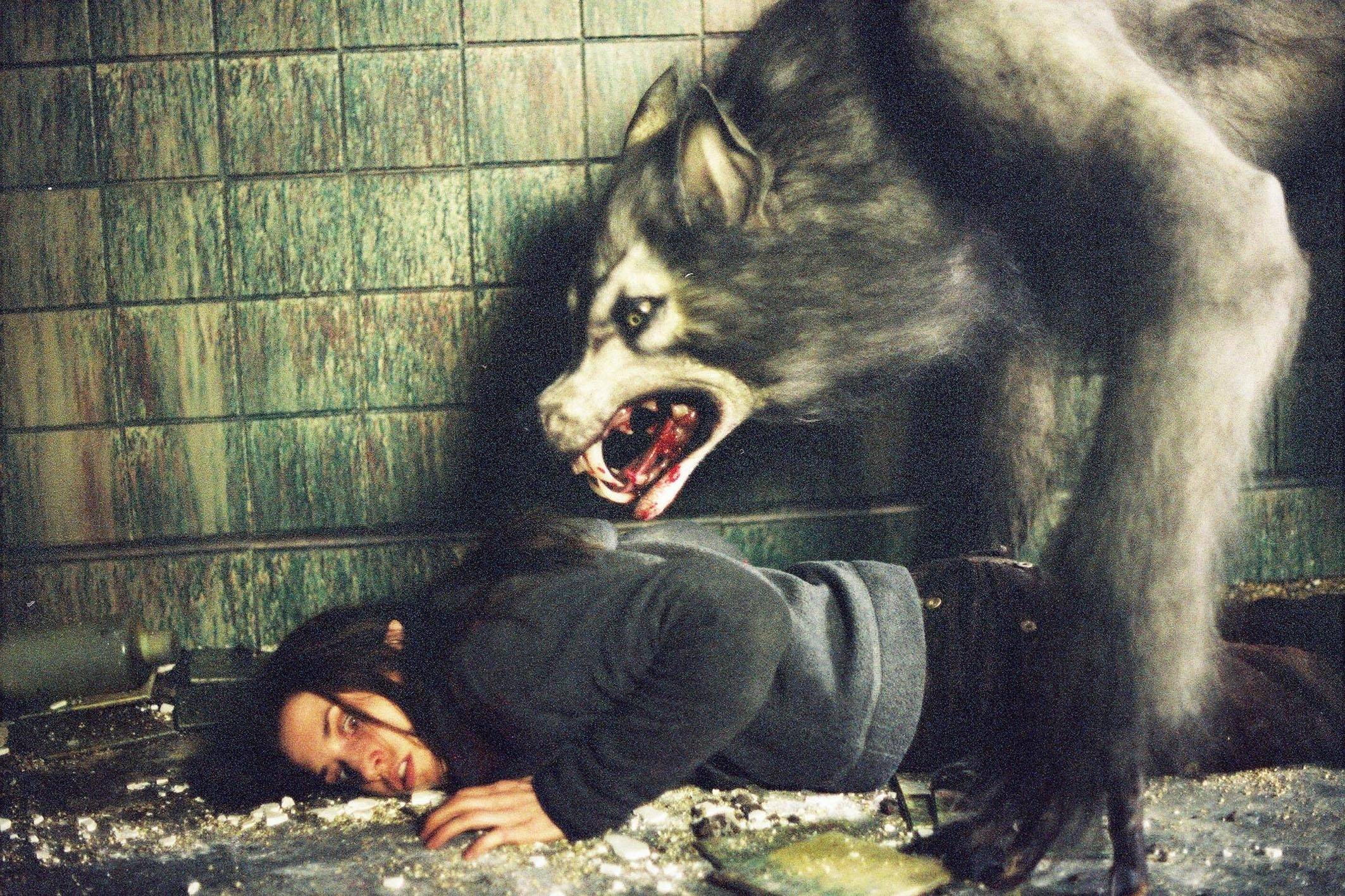In anticipation of our first feature-length film, COLD WIND BLOWING, we decided to post a countdown of our favourite Winter-set horror films. There really isn't any season more inherently spooky than the haunting danger that a brisk winter night presents, and each of the below films relish in the atmosphere that a sprinkling of drifting snow provides. Take a look below to see Dionne and I's ten favourite Winter horror films!
10) FROZEN (Dir. Adam Green)
Having skied my whole life, this film brings to life a nightmare I’ve had on several occasions. Stuck on a chairlift at the end of the ski season, three friends are forced to find a way off the mountain—and then a pack of wolves shows up. This film works for its likeable group of characters, who are forced to make increasingly risky and unfortunate decisions as the night drags on. The performances and cinematography really work to make the audience feel the blistering cold of the mountain air, and it's because of that tangible Winter atmosphere that this film opens our list.
9) MISERY (Dir. Rob Reiner)
Kathy Bates is amazing as the villain in one of the rare times that the film adaptation may have outdid the original book. Like most films on this list, the central action is reserved to one location out in the winter wilderness, and the exterior cold is only one of many obstacles preventing our hero’s escape. Rob Reiner is perhaps the reigning king of King adaptations, and Misery is possibly the best filmed version of a King horror story. ("I wouldn't go that far, my choice would be Carrie!" -Dionne)
8) I SAW THE DEVIL (Dir. Kim Jee-woon)
This might be the best that snow has ever looked on camera, with the Winter setting so integral to the film’s style that just watching the film makes you feel cold. The serial killer plot turned cat and mouse game is also more fresh and thrilling here than it has been in most films post-Silence of the Lambs, albeit this leads to an incredibly dark film that requires space between rewatches.
7) TALES FROM THE CRYPT: AND ALL THROUGH THE HOUSE (Season 1, Episode 2 – Dir. Robert Zemeckis)
"Although not a movie, my love for Tales from the Crypt runs deep and I couldn’t, in good conscience, leave this episode off the list of my favourite winter set scares. A simple premise, a woman murders her husband on Christmas Eve, all the while an escaped maniac in a Santa costume stalks her around her property trying to get into the house and at her young daughter. It’s a fun 22 minutes of stalking and slashing punctuated by the Crypt Keeper’s signature puns and if you’re looking for something to whet your appetite for the Holiday Horror season, I recommend starting off with this to get you in festive spirits." -Dionne
6) PONTYPOOL (Dir. Bruce McDonald)
The most creative take on the zombie film in its post-genre revival, this one-location Canadian horror story follows one night in the studio with a radio disc jockey as unknowable events begin to occur outside. Although it's entirely interiors, the space of the station still feels hauntingly cold and isolated, with an atmosphere so suffocating that you feel like you’re trapped there with the characters. It’s chilling isolationist Canadian horror done in the way that only us Canadians know how.
5) THE THING (Dir. John Carpenter)
The reason that The Thing works so damn well is the time that Carpenter takes to familiarize the audience with his characters before all hell breaks loose. The first portion of the film is made up of small moments in which the limited cast of characters waste time against the backdrop of a timeless eternal Winter. You like pretty much everyone in this movie, which makes each surprising death all the more painful and the isolation of the arctic that much more vast. The body horror effects are also obviously unmatched by any other film, although it’s Carpenter’s subtle directorial touches and the memorable characters that have made it a lasting classic.
4) WOLF’S CHALET (Dir. Věra Chytilová)
A group of ten teenage students are invited to a retreat at a remote mountain chalet, but eleven students arrive at the peak of the mountain. What progresses is a psychological onslaught of adolescent torment as the chalet’s supervisors tell the students to out the intruder. The film only gets crazier from there, and the cinematography relishes in the bitterly cold environment that the unfortunate students find themselves in. Not entirely unlike a revisioning of The Thing but with teenagers, underrated master of Czech cinema Věra Chytilová presents a chilling tale of paranoia and isolation that is an unknown gem of Winter-set horror cinema.
3) GINGER SNAPS 2: UNLEASHED (Dir. Brett Sullivan)
A follow-up to my favourite Canadian horror film, Ginger Snaps, in some ways the sequel delivers better horror than the original. The atmosphere is more fully realized as Emily Perkins’ character finds herself locked in an institution and forced to come up with creative and deeply unsettling solutions to her lycanthropy problem. Katherine Isabelle even returns to mock our hero’s attempts, while a young Tatiana Maslany plays a haunted teenager with a disturbing backstory. The film eventually leads to a freezing cold Straw Dogs with werewolves, which is the best possible climax for a creature feature.
2) WENDIGO (Dir. Larry Fessenden)
"If it were not for the sentimentality I hold for Black Christmas, then Wendigo would be number one on my list. This is a master class in film-as-character study, with incredible performances and superb writing. This is far and away the most atmospheric film on the list and a film I force everyone I know to watch when they come over to my house (then I judge them on whether or not they cried). It's also filled to the brim with stylistic flourishes, and as a filmmaker I'm left shaking my head at how they could have pulled off some of the unforgettable shots in this film. Larry Fessenden is the master of all things Wendigo and this film, for me, cements his place as a horror auteur, with his ability to evoke emotion and terror without relying on shocks to tell a story." -Dionne
1) BLACK CHRISTMAS (Dir. Bob Clark)
"My best friend, Jessoa, and I have been celebrating our own Christmas since we were eleven years old on every December 23rd. We binge on snacks, exchange gifts, and watch horror movies (sometimes we get food poisoning and fall asleep on the bathroom floor, but only if we’re really lucky). In 2007, I brought a copy of the original Black Christmas for us to enjoy. As seasoned horror fans, there’s very little that scares us, but this was an exception that made us scream out loud and sleep with the lights on, not to mention every single year we forget that Billy is hiding behind the door. The sound design is superb, including the haunting use of Christmas music to invoke terror. This is also the best example of the classic ‘the calls are coming from inside the house’ plot (see the clip below for the first phone call). Black Christmas is also a brilliant Canadian-set female-lead story, making it not only my number one Winter-set film, but my favourite film of all time.” -Dionne
















